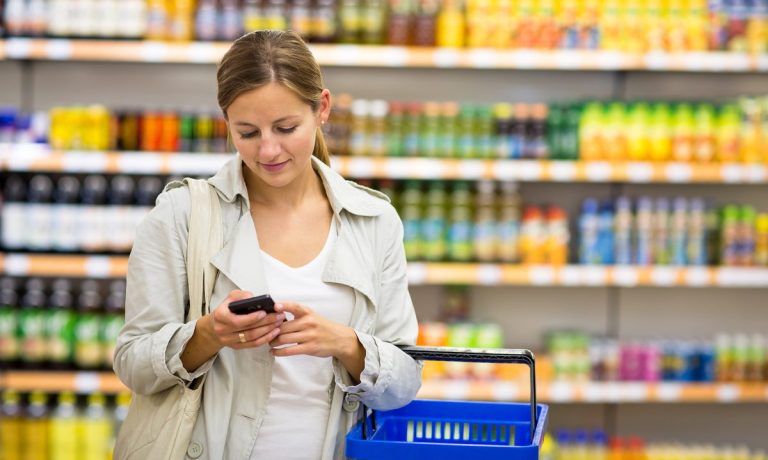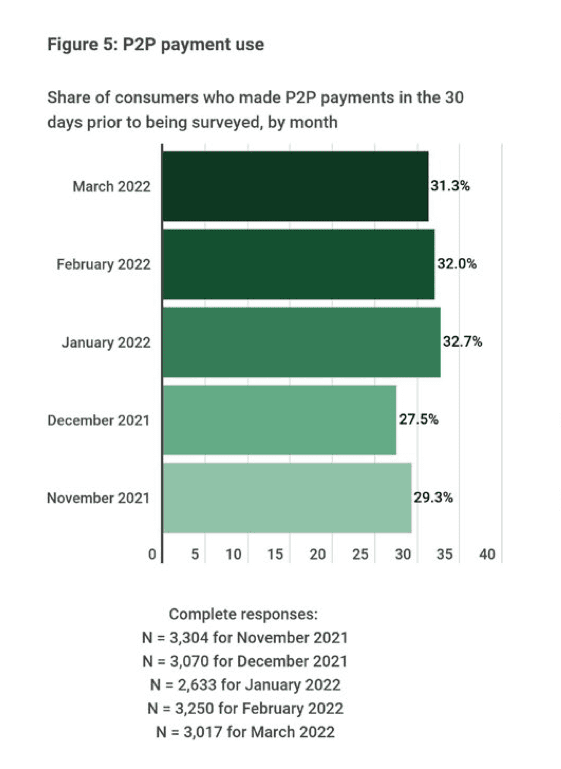
Inflation continued to be a factor for shoppers during March, PYMNTS’ latest study tracking consumer spending and eCommerce trends found.
The report, “Digital Economy Payments April 2022 U.S. Edition How Consumers Pay in The Digital World,” also noted that use of peer-to-peer (P2P) payments dipped slightly, hinting at a decrease in discretionary spending, while digital wallets continued to vie for a greater share of the payments mix.
Though the latest census-balanced survey of more than 3,000 U.S. consumers found that spending rose as eCommerce made incremental gains, rising prices are clearly having a dampening effect on consumers’ spending habits. PYMNTS’ data found, for instance, that the share of consumers who shopped for groceries dropped one percentage point to 88% and retail shopping fell two percentage points to 60% as prices rose across the board.
One positive sign is a gain in travel, purchased by 19% of consumers in March — a record since the monthly study series started in December. Here we find the inverse from grocery and retail, with average travel spend of $363 in March lower than prior months.
Travel is also the one category where digital wallets are making inroads.
“Our data shows that 17% of all travel purchases were made using PayPal and other digital wallets,” the report noted. “In comparison, PayPal and other digital wallets were only used in 3.6% or less of all other retail purchases.”

Get the study: Digital Economy Payments: How Consumers Pay In The Digital World April 2022
Card Payments Run the Table
Except for travel, eWallets continue an uphill climb to more widespread adoption, with card transactions still accounting for the lion’s share of purchases PYMNTS tracked in March.
According to Digital Economy Payments April 2022, “42% of grocery sales were made using debit cards, representing about $41 billion in sales. Only 6% of sales were made with digital wallets. While PayPal and other digital wallets have meaningful shares of sales made through online channels, a lack of in-store usage brings the average down.”
The split is illustrated by PayPal, used in 10% of online transactions but just over 3% of all grocery purchases, most of which are still made in physical stores.
Grocery serves as a bellwether for of payments preference in different settings. Wallets are more popular for increasing eCommerce transactions.
Continuing dominance of debit and credit payments brings the fear of fraud, leading to a small but meaningful rise in card declines to 11% in March, up one percentage point in a month.
As the study noted, “37% of payment declines occurred when a consumer used a debit card, and 33% occurred with a credit card. PayPal and other digital wallets were used in 13% of declined purchases — a relatively high share given their low use.”
Card not present (CNP) fraud prevails in ecommerce. According to the latest data, 78% of consumers experienced card fraud online, compared to 22% in brick-and-mortar stores.

Get the study: Digital Economy Payments: How Consumers Pay In The Digital World April 2022
P2P Apps Square Off
An overall rise in peer-to-peer (P2P) payments in recent months took an incremental dip in March — another difference of one percentage point — from 32% in February to 31% in March.
This is likely the result of inflation lowering the number of restaurant outings and other opportunities for consumers to pay their share with a P2P app.
In March, the average P2P payment was $292, contrasting a $211 average in February.
Younger consumers show a much higher preference for P2P usage.
“P2P adoption was highest among younger adults: 47% of millennials, 45% of bridge millennials, and 41% of Gen Z consumers made payments through a P2P platform,” according to the March study. “Only 16% of baby boomers and seniors made payments through P2P platforms.”
Within that group of apps, Venmo took PayPal for the second month running as the most used P2P platform, with Early Warning Services’ Zelle app taking third place.

Get the study: Digital Economy Payments: How Consumers Pay In The Digital World April 2022